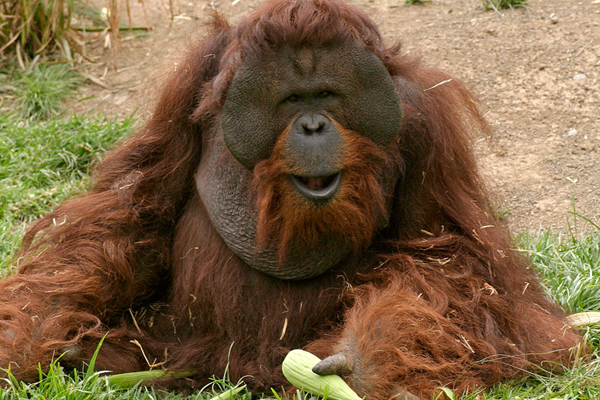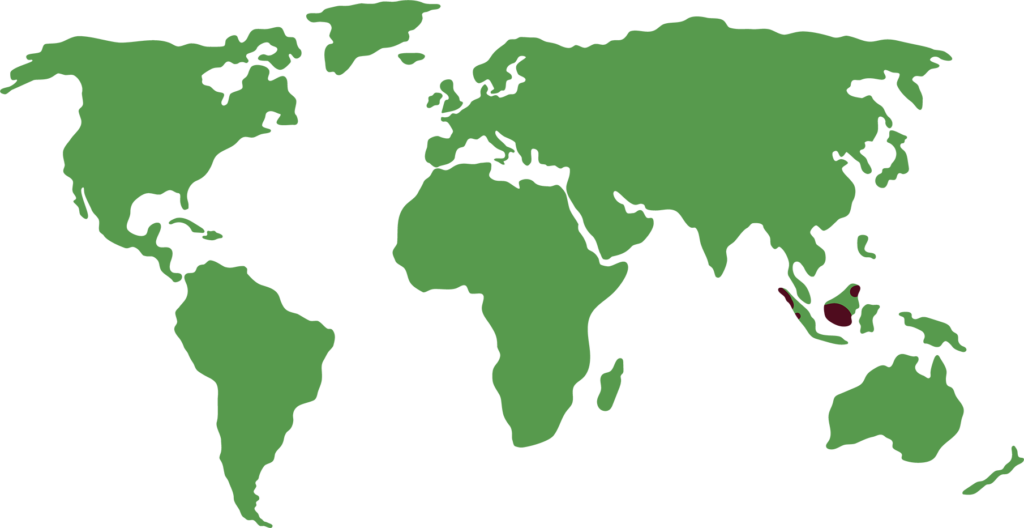BORNEAN ORANGUTAN
Pongo pygmaeus

LENGTH

1,5 m
WEIGHT

90 kg
LIFESPAN

50 years
The Bornean orangutan is a species of orangutan endemic to the island of Borneo. Like other great apes, orangutans are highly intelligent and exhibit distinct tool use and cultural patterns in the wild. They share approximately 97% of their DNA with humans.
General characteristics
The Bornean orangutan is the third largest ape after the western gorilla. It has a distinctive body shape with very long arms that can reach up to 1.5 metres in length. The hands and feet are prehensile and grasping.
Their fur is coarse and reddish in colour, which does not cover the face, leaving the greyish skin visible. They lack of tail and have large fatty cheek pads known as bridles, as well as a hanging throat sac.
Males and females differ in that males have larger flanges composed of muscle and large amounts of fat, while females have smaller, more muscular flanges. Males also have more pronounced beards and whiskers.
Bornean orangutans bear strong similarities to Sumatran orangutans.
Feeding
They are mostly herbivorous. They eat a variety of plants, flowers and fruits.
Behaviour
The small amount of fruit means that each area cannot support more than one orangutan, forcing them to live in solitary confinement, meeting others only to breed.
They are usually calm, but the defence of their territory makes them aggressive towards other conspecifics.
Reproduction
Males and females generally only come together when they have to mate. Females tend to choose males with larger flanges.
The gestation period lasts approximately 270 days and only one offspring is born. Newborn orangutans nurse every three to four hours and begin to take soft food from their mother’s mouth at four months.
During the first year of life, the offspring clings to its mother’s abdomen by interlacing its fingers and grasping her neck.They are weaned at four years of age, but it could be much longer and on average they do not become fully independent until seven years of age.
Threats
It is an endangered species.
The growth of the human population has reduced its area of distribution and numbers. Much of its habitat has been converted into timber farms or plantations. In addition, babie orangutans are captured for sale.
Distribution
They live in the primary lowland rainforests of the island of Borneo in Indonesia.

Did you know?
The offspring need a great deal of time to develop and only have one offspring every 6 to 8 years.
The word orangutan is derived from the Malay words “orang”, meaning ‘people’ or ‘people’, and “hutan”, ‘jungle’, ‘jungle’ or ‘forest’, i.e. it is a “jungle person”.
They build nests for resting and sleeping. They spend the night in these constructions made of branches and leaves.
Conservation status
